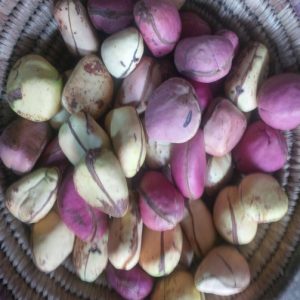Planting season is done early in May in order to ensure adequate development of the seedling before transplanting in July. Gum Arabic is harvested during the dry season because, during the rainy season, no gum is formed since the trees are in full bloom. The dry season lasts from October to June and the gum is collected every 10 days during this period. After collection, the gum is brought from the farms and stands to villages from there it’s transported to the market. Uses of Gum Arabic
Gum Arabic is used as a thickener, suspender, emulsifier, stabilizer, flavor carrier, binder, and encapsulating material.
In addition, it is used in confectionaries, food, beverages, pharmaceuticals, and chemical industries.
The gum has binding or adhesive properties and as such is used as a good emulsifying agent. It is, therefore, most useful to pharmaceutical, food, and beverage flavorings, dairy and ice cream, cosmetics, and the confectionery industry.





Reviews
There are no reviews yet.